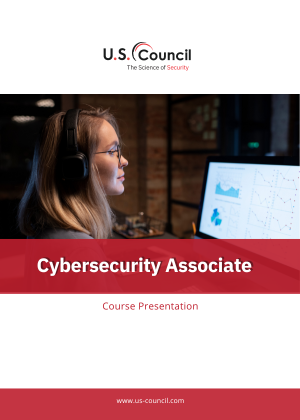 Certified Cybersecurity Associate-SOC Analyst
Certified Cybersecurity Associate-SOC Analyst
 Certified Cybersecurity Associate-SOC Analyst
Certified Cybersecurity Associate-SOC Analyst
Course Overview
The Cybersecurity Fundamentals certification is designed to provide a comprehensive understanding of the fundamental concepts and practical skills required to start a career in Cybersecurity. This program is ideal for individuals aspiring to become Cybersecurity Professionals, equipping them with the knowledge and hands-on experience required to pursue an Advanced Cybersecurity Certification
Key Topics:
- IP Addressing, Network Devices, and Packet Analysis
- Operating Systems (Windows, Unix/Linux)
- Troubleshooting network problems
- SOC Operations
- Network Monitoring
Course Curriculum
Module 1:Introduction To Cybersecurity
- What is Cybersecurity
- Understanding the Cybersecurity terminology
- Components of Cybersecurity, Networking, Server administration & Security Operations Center.
Module 2:Fundamentals of Networking
- Introduction to Networking
- Understanding Networks and Networking
- Types of Networks: LAN, MAN, WAN, and Internet
- Network Topologies: Bus, Ring, Star, and Mesh
- Essential Network Components: NIC Cards, MAC Addresses, Media, and Devices (Hubs, Switches, Routers, Firewalls)
- OSI Reference Model and TCP/IP Model
Module 3:Basics of Operating Systems
- Introduction to Operating Systems
- Overview of Windows, Linux, and Mac OS
- Server vs. Client Operating Systems
- Installation Processes for Windows Server 2022, Windows 11, Ubuntu Server, and Ubuntu Client
Module 4:Building and Setting Up Organizational LAN Networks
- Understanding LAN Networks
- Setting up a LAN: Components and Functions
- Working with Hubs, Switches: Broadcast Traffic, Flooding, MAC Tables, Unicast
Module 5:Principles of IP Addressing
- Understanding IP Addresses
- Types of IP Addressing: IPv4 and IPv6
- Subnetting Techniques
Module 6:Configuring, Administering, and Managing Windows Server
- Active Directory Setup and Management
- Domain and Workgroup Models
- User and Group Policies
- File and Printer Sharing
- DHCP and DNS Services
- Internet Information System (IIS)
Module 7:Configuring, Administering, and Managing Linux Server
- Linux Operating System Basics
- Linux Filesystem and User Accounts
- File Permissions and Package Management
- Setting up Web and FTP Servers
Module 8:Implementing WAN Connectivity between Multiple Organization Locations
- Introduction to Routers and Their Functions
- Configuring Cisco Routers
- WAN Connectivity and Routing Principles
- Types of Routing: Static, Dynamic, and Default
Module 9:Implementing Internet Connectivity
- Network Address Translation (NAT) and Port Address Translation (PAT)
- Static NAT
- Configuring Organization Routers
- Configuring Home WiFi Routers
- WiFi Security for Home Users
Module 10:System and Network Troubleshooting Techniques
- Troubleshooting System,LAN, and WAN Connectivity Issues
Module 11:Introduction to Cloud Technologies
- Understanding Cloud Computing
- Types of Cloud Technologies: SaaS, PaaS, IaaS
- Overview of Cloud Service Providers: AWS, Azure, GCP
- Creating Cloud Machines on AWS, Azure, and GCP
Module 12:Commonly used Protocols & Ports
- ARP Protocol
- DHCP Protocol
- DNS Protocol
- HTTP Protocol
- FTP Protocol
- SMTP Protocol
- SSH Protocol
- Telnet Protocol
Module 13:Cyber Threats and Incident Response
- Common Cyber Threats
- Host discovery
- Service enumeration
- Vulnerability scanning
- Web application attacks
- Directory traversal
- Cross-site scripting
- SQL Injection
- Password cracking
- Brute force attack
- Dictionary attack
- Phishing attack
- Man-in-the-middle attack
- Denial of Service (DoS)
- Distributed Denial of Service (DDoS)
- Malware types
- Virus
- Worms
- Trojans
- Ransomware
- Incident Response
Module 14:Security Operations Centre (SOC)
- What is SOC
- Roles and responsibilities of SOC
- Tools & Technologies in SOC
- Firewall
- IDS
- IPS
- Next gen. Firewall
- UTM
- SIEM
- Endpoint Detection and Response (EDR)
- Security Information and Event Management (SIEM)
- What is SIEM
- Functions of SIEM
- SIEM dashboard and alerts
Module 15:Best Practices in Cybersecurity
Schedule
Update Soon

course fee
USD 3000
- Duration: 1 Month (52 Hours)
- Mode Of Training: Online
- Placement Assistance: Yes
- Certificate: Yes


